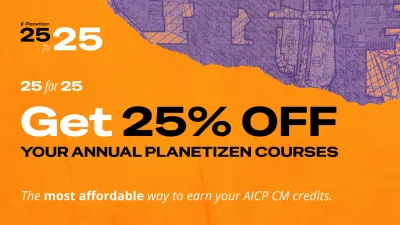A number of entry-level planners make tactical choices that lessen their chances of landing the best possible job. If you see yourself in these, please take note.

With commencement season just behind us, I’ve been discussing job searches with a number of recent graduates as well as with employers, and have had opportunities to see many cover letters and resumes. This leaves me with the impression that there are tactical choices a number of entry-level planners are making that lessen their chances of landing the best possible job. I thought I’d share my observations. If you see yourself in these, please take note.
Skills: The skills that planning firms and agencies want in employees are the skills you should be listing. A list of software you know is nice, but if your skill set consists only of MS/Office, ArcGIS, SPSS, and Sketch-up, you don’t have the skills needed to plan. List the analytic and communicative skills you learned in school and have practiced in your work; the skills you imagine the organization needs from someone with the job title you want. (Hint: the learning objectives of your courses are a good place to look to start this list.)
Your Roles: Be clear about your role and circumstances of reports and projects you list. A project list that mixes class projects, professional reports, and journal articles, with no distinction, indication of authorship, or the nature of your involvement only confuses hiring committees. Give a proper bibliographic citation for each item. List only items you would be proud to provide, if asked; give hotlinks to the items online if you can. If the “author” is an organization, the organization should be listed as the author, and you should give a short indication of your role in the project.
Focus: Use multiple resumes for multiple ambitions. If you are open to work as an architect, engineer, lawyer or policy analyst in addition to work as a planner, you need several resumes: one for each career objective. Hiring committees want employees who are dedicated to the position they are hiring to fill, not Jacks of all trades. Of course, if the position is one involving two professions, then a two-profession resume makes sense for that application.
One-page; Not: Forget the one-page advice you keep getting. Your resume needs to describe your skills and experience in sufficient detail to be convincing about your abilities to do the job. For professional work, one page is usually not enough.
Look and feel: the resume is an example of your written and graphic communication abilities; it should show off your abilities and your judgment. Use appropriate graphic tools to highlight what you want the reader to see most. Give a clean, readable, professional look. Use margins and line breaks that improve readability. Skip the trite clip art.
Cover letters: In addition to all the usual purposes, a cover letter is your chance to show the attitude you will bring to your work. If the letter is focused on you, your background, and your needs, you leave the impression that your work will also be about you. Employers want workers who are motivated to advance the aims of the company, agency or organization. Letters that stand out to them discuss the organization’s goals and how the applicant anticipates helping the organization achieve its goals. If you don’t know enough about the organization’s goals to write intelligently about them, then you have not done enough homework to apply.
The right job is out there. Show yourself in the way to get it!

Planetizen Federal Action Tracker
A weekly monitor of how Trump’s orders and actions are impacting planners and planning in America.

Maui's Vacation Rental Debate Turns Ugly
Verbal attacks, misinformation campaigns and fistfights plague a high-stakes debate to convert thousands of vacation rentals into long-term housing.

Restaurant Patios Were a Pandemic Win — Why Were They so Hard to Keep?
Social distancing requirements and changes in travel patterns prompted cities to pilot new uses for street and sidewalk space. Then it got complicated.

In California Battle of Housing vs. Environment, Housing Just Won
A new state law significantly limits the power of CEQA, an environmental review law that served as a powerful tool for blocking new development.

Boulder Eliminates Parking Minimums Citywide
Officials estimate the cost of building a single underground parking space at up to $100,000.

Orange County, Florida Adopts Largest US “Sprawl Repair” Code
The ‘Orange Code’ seeks to rectify decades of sprawl-inducing, car-oriented development.
Urban Design for Planners 1: Software Tools
This six-course series explores essential urban design concepts using open source software and equips planners with the tools they need to participate fully in the urban design process.
Planning for Universal Design
Learn the tools for implementing Universal Design in planning regulations.
Heyer Gruel & Associates PA
JM Goldson LLC
Custer County Colorado
City of Camden Redevelopment Agency
City of Astoria
Transportation Research & Education Center (TREC) at Portland State University
Jefferson Parish Government
Camden Redevelopment Agency
City of Claremont






























